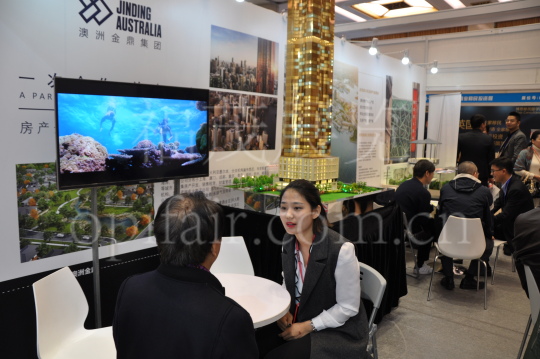As a crucial platform for direct communication between homebuyers, investors, and developers, real estate exhibitions should be an ideal venue for efficiently obtaining information and comparing projects. However, many visitors, due to lack of experience or misconceptions, experience inefficiencies in their visit and even make poor decisions.
Misconception 1: Blindly “sweeping the exhibition” without a goal-oriented approach
Symptoms: Starting at the entrance and browsing booth by booth, being drawn in by sales pitches, ultimately collecting a large amount of irrelevant information without gaining any real benefit.
Consequences: Physical exhaustion, information overload, and difficulty focusing on projects that meet your needs.
Suggestion: Clarify your core requirements (such as budget, location, and unit types) before the exhibition, narrow down your priorities to 3-5 key booths, prioritize visits, and engage in in-depth discussions.
Misconception 2: Believing verbal promises and ignoring contract terms
Symptoms: Accepting sales pitches such as “school district,” “direct subway access,” and “appreciation potential” without seeking written confirmation.
Consequences: Discovering unfinished amenities and property rights disputes after delivery, making it difficult to enforce your rights.
Recommendation: Require sales representatives to indicate the basis for their commitments (such as government planning documents) in promotional materials, and focus on verifying the delivery standards and breach of contract clauses in the contract.
Misconception 3: Being swayed by “limited-time offers” and making impulsive decisions
Symptoms: Rushing to pay a deposit based on promises like “Book today and get 50,000 yuan off” or “First 20 get 2% off” without fully comparing the market.
Consequences: Project flaws (such as reduced property rights or higher property fees) may be overlooked, or the reservation may be unable to be canceled by the time a better option is discovered.
Suggestion: Clarify the terms of the offer (such as the deposit amount and the signing deadline), establish a 24-hour cooling-off period, and compare multiple projects before making a decision.
Misconception 4: Ignoring the developer’s qualifications and focusing solely on the project’s surface
Symptoms: Being attracted by luxurious exhibition booths and beautiful sandboxes without verifying the developer’s past project delivery record and financial strength.
Consequences: Risk of unfinished projects, delayed delivery, or substandard quality.
Suggestion: Verify the developer’s qualifications through the Enterprise Credit Publicity System and require proof of a pre-sale license and a funds escrow account.
Misconception 5: Over-reliance on sales and lack of independent verification
Symptoms: Relying solely on the salesperson’s one-sided presentation without verifying information through official channels (e.g., the Planning Bureau website or Education Bureau announcements).
Consequences: Possibly misled by vague statements such as “planned amenities” and “future appreciation potential.”
Suggestion: Cross-verify key information (e.g., school districts, subway construction progress), and retain screenshots of government documents as reference.
Misconception 6: Neglecting follow-up and simply “browsing” information
Symptoms: Failing to organize materials and review needs after the exhibition, leading to the gradual forgetting or confusion of the information collected.
Consequences: Inability to effectively compare projects, missing the optimal decision-making opportunity.
Suggestion: Organize materials on the day of the exhibition, categorizing them by requirements (e.g., price, location, and risk points), and discuss them with family or advisors within 24 hours.
Supplementary Mistake: Improper Use of Technology
Symptoms: Over-reliance on VR viewing and online property selection systems, overlooking the importance of on-site inspections; or refusing to use electronic materials and carrying large amounts of paper brochures, leading to omissions. Recommendation: Use technology as an aid (such as for preliminary apartment screening), but ultimately, on-site inspections are still necessary to assess details like lighting and noise levels. Prioritize scanning QR codes to access electronic materials to reduce physical burdens.
The value of real estate exhibitions lies in supporting decision-making through efficient information acquisition, rather than being “held hostage” by the exhibition atmosphere or sales pitches. To avoid the above misconceptions, adhere to three principles: prioritize goals, prioritize evidence, and rationally verify. Remember: exhibitions are only a starting point for information gathering; true selection should be based on thorough comparison and on-site inspection.







